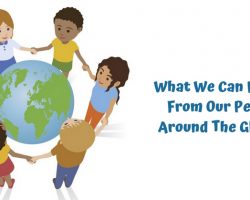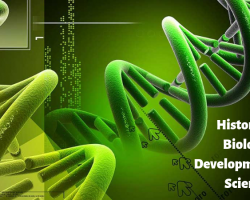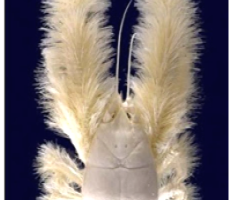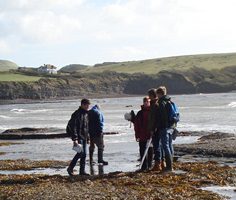Published Articles

What We Can Learn From Our Peers Around The Globe?
Since the end of the XIX century, international conferences have been an integral part of the organization of scientific knowledge. For example, since 1900, the International Congress of Biological Sciences assembles once every five years. More than 2500 biological scientists have exchanged their skills and knowledge by participating in such international conferences!

Short History of Biology Development
Although the concept of biology as a special natural science originated in the XIX century, biological branches originated earlier in medicine and natural history. Usually, the main aspects of biology are formed by such ancient scholars as Aristotle and Galen through the Arab physicians Al-Jahiz, ibn-Sina, Ibn Zuhr and Ibn al-Nafis. During the Renaissance era, biological ideas in Europe have actualized thanks to the invention of typography and the spread of printed works, interest in experimental research and the discovery of many new species of animals and plants in the era of great geographical discoveries. At that time, outstanding minds Andrei Vesalius and William Garvey worked, who laid the foundations of modern anatomy and physiology. Somewhat later, Linnaeus and Buffon did a great job of classifying the forms of living and fossil creatures. Microscopy has opened up the prior unspecified world of microorganisms for observation,…

Who is Biologist?
It would have been impossible to actively develop the science of nature and study the interaction of living beings with our environment without specialists, known as biologists. They not only explore the properties and laws by which the living world develops but also determine the diversity of plant species. The biologist collects material on topics, studies it, conducting experiments and developing technologies for the practical application of the data. A biologist is not any person who has gained higher education in this sphere, but a scientist who has rich experience in the study of nature with published scientific works. For a more detailed study of individual branches of biological science, scientists undergo special classes. Then, botanists study vegetation, zoologists – animals and birds, physiologists and anatomists – human features, and microbiologists – microorganisms. Of course, there are other areas in biology. The main workplace of…
What is natural capital?
Daija Angeli, project officer in the Natural Capital Initiative (NCI), works with the term natural capital every day. When a member of NCI’s Steering Group mentioned that people don’t know what it means until you tell them about bumblebees and apple trees, she thought it was time to reflect on the term again. Most of us will first think of the skyscrapers in the City of London when hearing the word capital. Financial capital, however, is only one input into the goods and services we use in our daily and not-so-daily lives. They also require other forms of input, or capital, including goods and services from to the natural environment. The concept of natural capital evolved to illustrate that we rely on our natural environment to improve the quality of our lives, and it allows us to place a value on what nature does for us. Natural capital is an economic metaphor…
The attack of an army ant
Student Samantha Hodgson studies at the University of Gloucestershire, and is writing about the swarm raiding technique of army ants ahead of our 24 hour lecture on ants and bees, hosted by Professor Adam Hart. Army ants are unparalleled in the animal world when it comes to raid strategy. They are capable of capturing tens of thousands of prey in a single day using a terrifying swarm tactic to cover the largest area possible. Eciton burchellii, found in the neotropical forests of central and South America, is a nomadic species with no fixed nest. Instead, the enormous colonies; often over 500,000 strong, travel to a different location every night. Raid parties are released from the colony to gather food. As many as 200,000 individuals are involved in the war-like ‘swarm raids’ used to capture their prey. The foraging troops branch out and spread to cover an area up…
Sometimes you need your own space – DIY for solitary bees
In advance of Professor Adam Hart’s 24 hour lecturethon, David Urry from the Society of Biology shares his experiences of building a bee hotel. I am not the most practically minded person in the world, but I do enjoy a bit of D.I.Y. After coming across an old picture frame and backing board in the garage, I did what any amateur naturalist (and even more amateur handy man) would do, and decided to convert it into a bee hotel for solitary bees and insect overwintering site. There are over 200 species of solitary bee in the UK, most of which go largely unnoticed to the untrained eye. Normally slightly smaller than their social cousins, they are no less active and ubiquitous and are common visitors to gardens and parks all over the UK. Within the 200 species found, a variety of life history strategies are represented as different species go…
Would you like termites with that?
Lauren Hoskin is a recent graduate in microbiology. She is interested in a career in science communication and writes for her own blog, Science Says as well as for the Student Hubs blog. Many problems faced by humans do not have simple answers, especially in the area of food security. How will we feed nine billion people in 2050? How do we make sure food is distributed equally? The list goes on. But there is one solution to the ever-growing problem of meat production which could help to reduce carbon emissions. PROteINSECT, launched in early 2013, is a Food and Environment Research Agency (FERA)-led project which has started to look at the idea of insects as animal feed. Rearing fly larvae on a range of organic waste and using them as a source of cheap and nutritious protein for animals would help to use waste effectively and improve land efficiency….
Not by good intentions alone
Guest post by Tatyana Novossiolova, a Wellcome Trust doctoral candidate studying the governance of biotechnology in post-communist Russia at the Division of Peace Studies, University of Bradford. The issues raised in Tatyana’s post will be discussed at our ‘Bioscience to Bioweapons’ Policy Lates event next Thursday. In May this year, Science reported the creation of a hybrid between the H5N1 avian influenza virus, which has 60% mortality rate in infected humans but does not easily spread from person to person, and the H1N1 virus, which caused several thousand deaths during the 2009 global pandemic. In light of its limited practical utility, the experiment was denounced as ‘appalling irresponsibility’. Back in 2011, similar concerns were raised following the announcement that two teams working independently in the Netherlands and the US created contagious H5N1. Far from being isolated cases, those experiments epitomise the worrying trajectory that some bioscience research has taken over the…

Weird and wonderful species adapted to their hostile habitats
By Amy Whetstone, Qualifications and Skills Officer at the Society of Biology The yeti crab and axolotl are two bizarre but brilliant species that are rarely in the limelight, but I believe deserve to be. So broaden your animal lexicon and spread the word about these peculiar aquatic species, who have adapted to cope in the harsh and inhospitable conditions they inhabit. Yeti crab, Kiwa hirsuta. This pale eerie-looking crab is so named because of its long hairy arms. It has good reason, however, for its strange appearance, not least the inhospitable environment in which it lives. The yeti crab was first discovered in 2005 at a depth of over 2200 meters which explains it pale appearance; no sunlight penetrates this depth so there is no need for fancy colours. So deep in fact that it can only be reached by using an unmanned submersible. The next…

Ecological adventures during Biology Week
As we start to plan Biology Week 2013 here at the Society of Biology we take inspiration from some of the successes of 2012. Here Nick O’Connor, a teacher at Highcliffe School, describes his A level field course in Dorset The Year 13 A level Biologists spent a superb 3 days along the Jurassic Coast on the Isle of Purbeck. This was a great chance to study outdoor biology with wellies on! We arrived at with great expectations at Leeson House Field Studies Centre which is set in an outstanding environment nestling in the Purbeck Hills overlooking Swanage Bay. We were met by our expert Biology tutor, Mr Mike Gould, and he took us through the field trip itinerary. We spent the first day looking at woodland ecology in the grounds of Leeson House. We also studied the abundance and distribution of lichens (which are a symbiotic relationship between an alga and…
